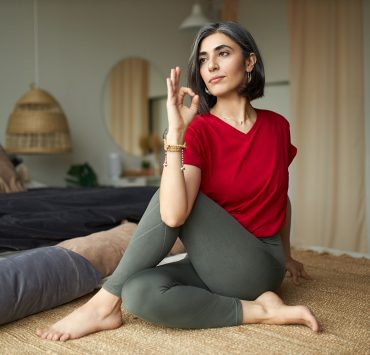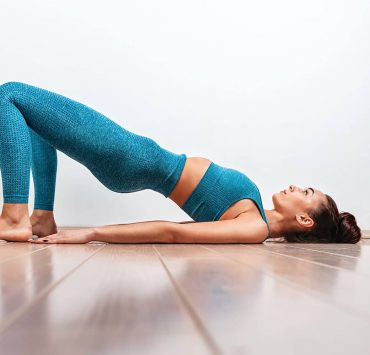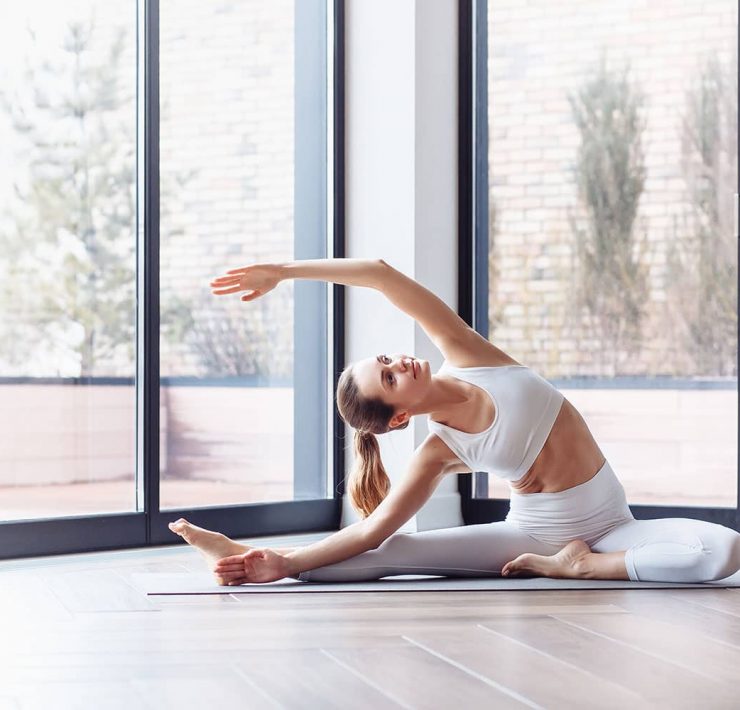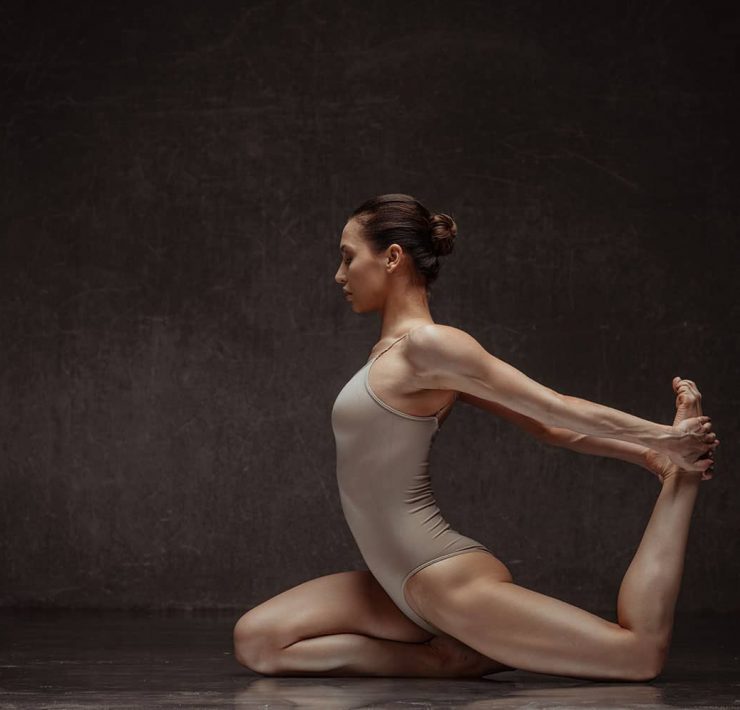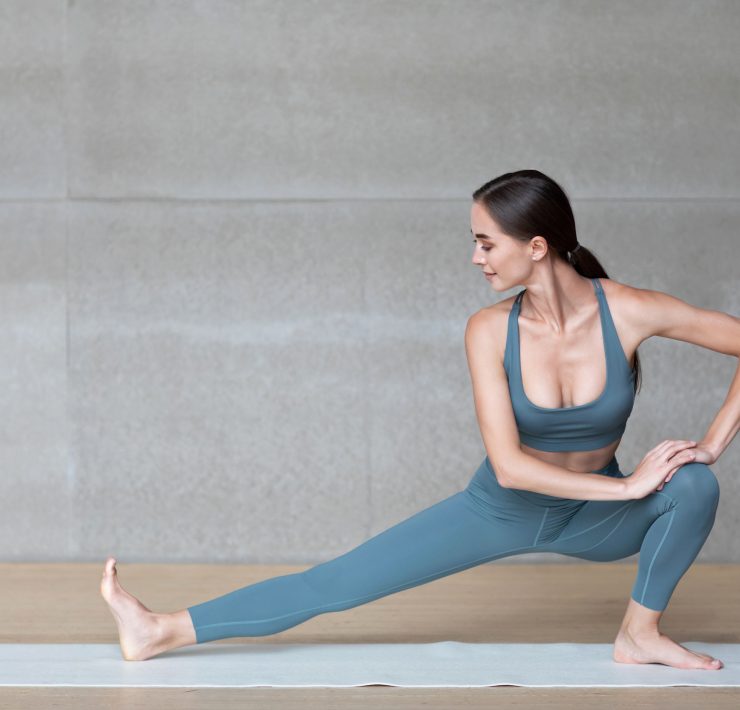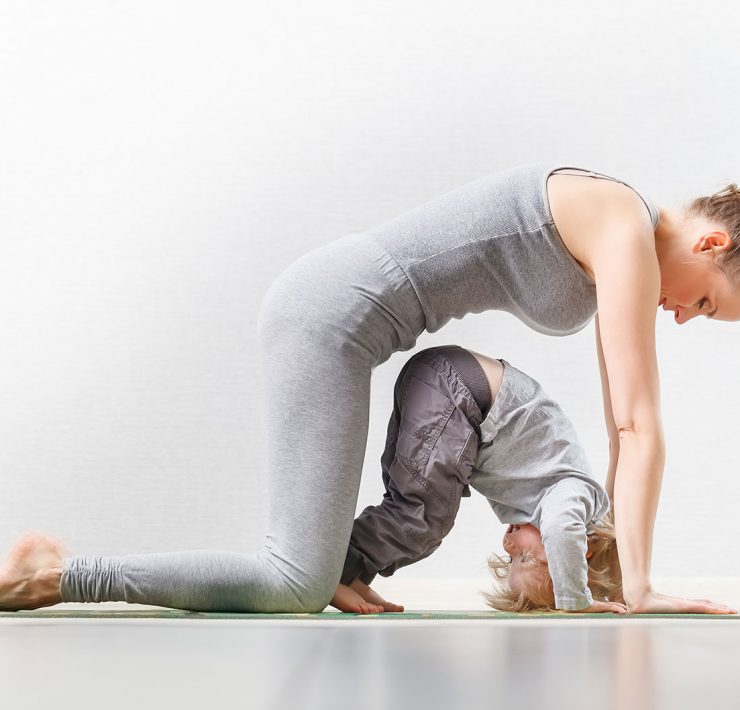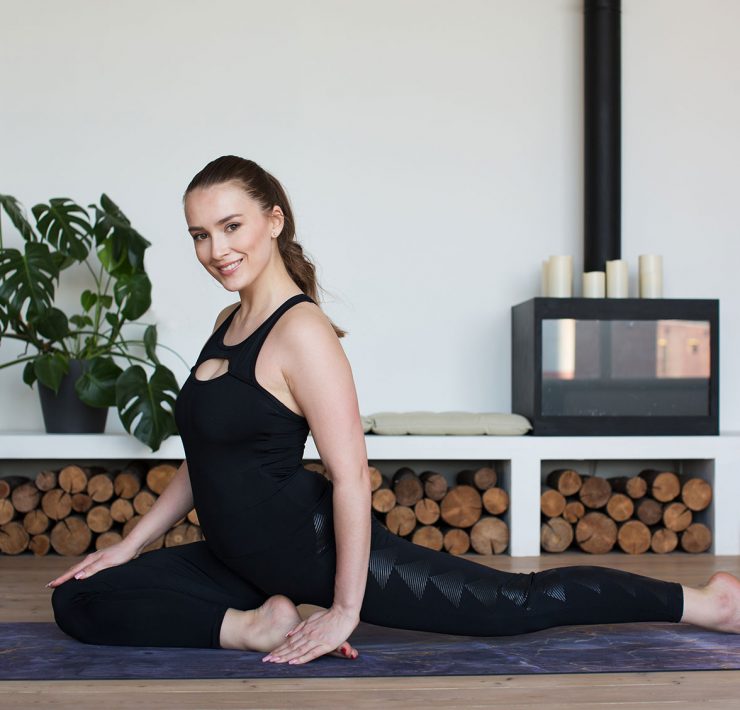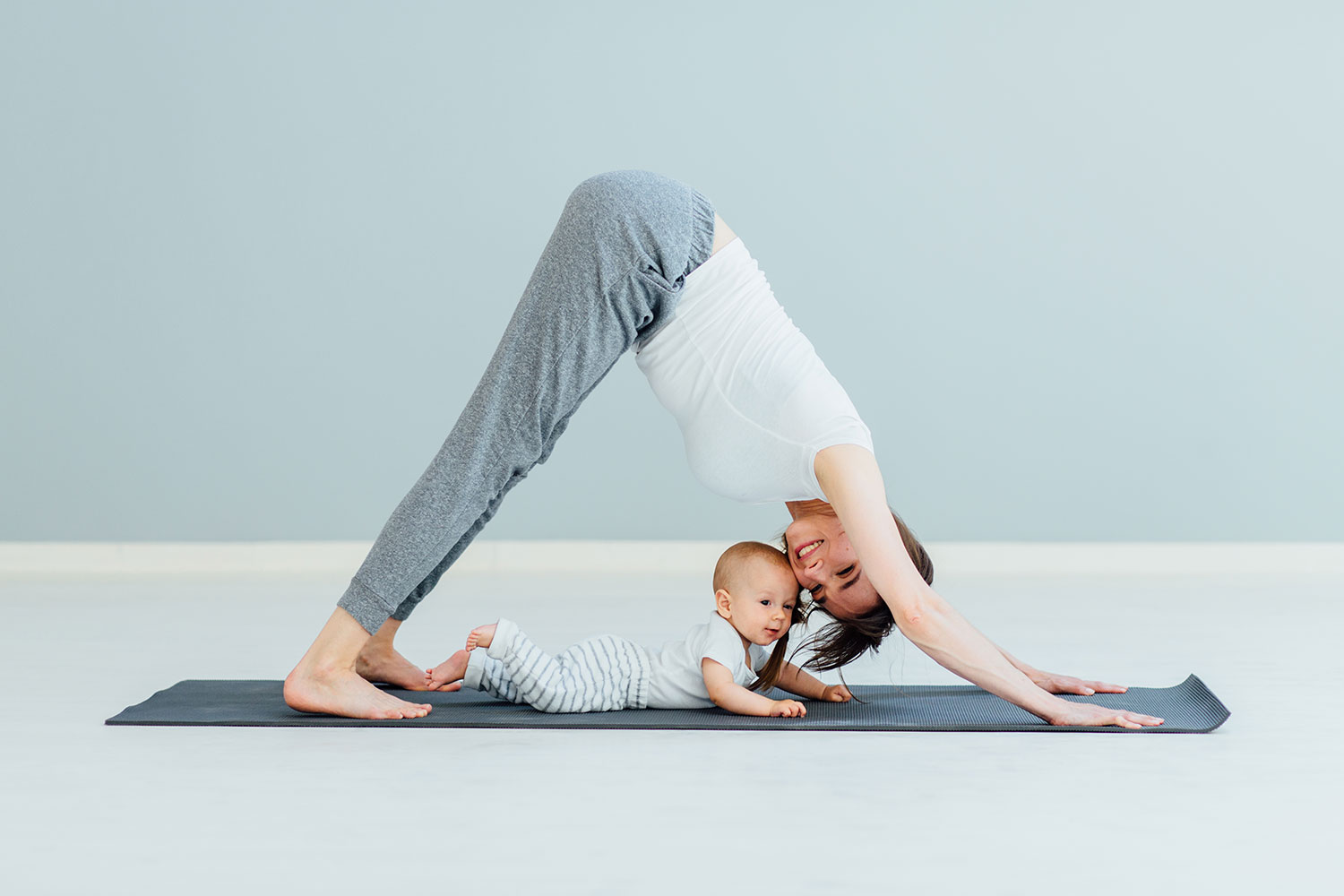
Former nutrition specialist Alexandra Mackenzie knows what it means to…
Pregnancy is a time where the body is under a lot of stress for nine months. After giving birth, many women are ready to get back into an exercise routine and feel strong again. Yoga is the perfect way to heal, strengthen, and build flexibility postpartum.
Working Out Postpartum
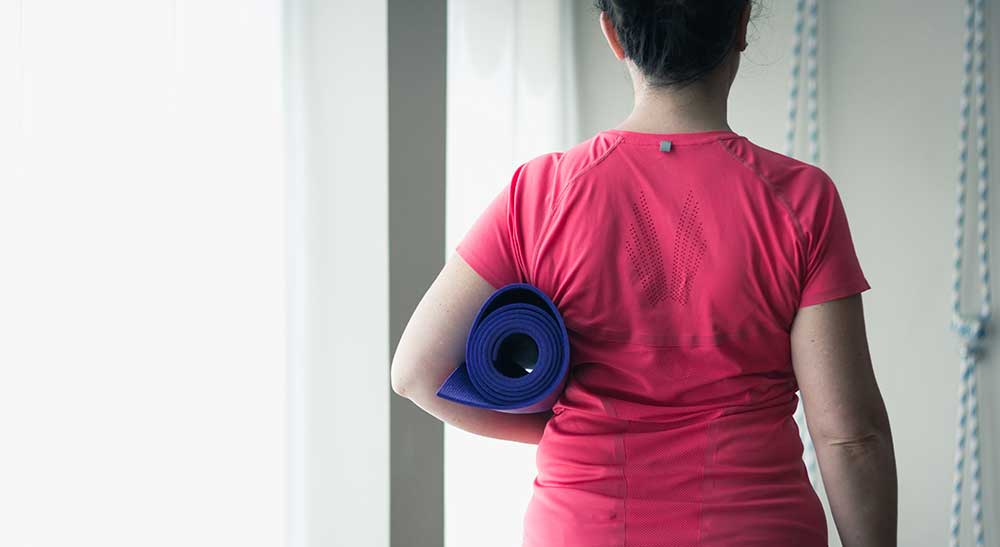
After carrying a baby for nine months and giving birth, many women face weakened pelvic floors, tight muscles, and sore joints. Starting postpartum exercise needs to be gradual and gentle. Many moms are excited to get back into their pre-pregnancy workout routines, but the body is not ready for strenuous exercise right away.
According to Women’s Health Magazine, doctors recommend that women start working out between six and eight weeks after giving birth. If you have had a C-section or a challenging pregnancy/labor, you will need to wait a bit longer.
Postpartum exercise routines will look different for everyone. No two pregnancies are the same. Everyone will differ when it comes to when they are ready to work out postpartum. Talk to your doctor, and they will help you develop an exercise plan that is appropriate for you.
Postpartum Exercise — Take it Slow!
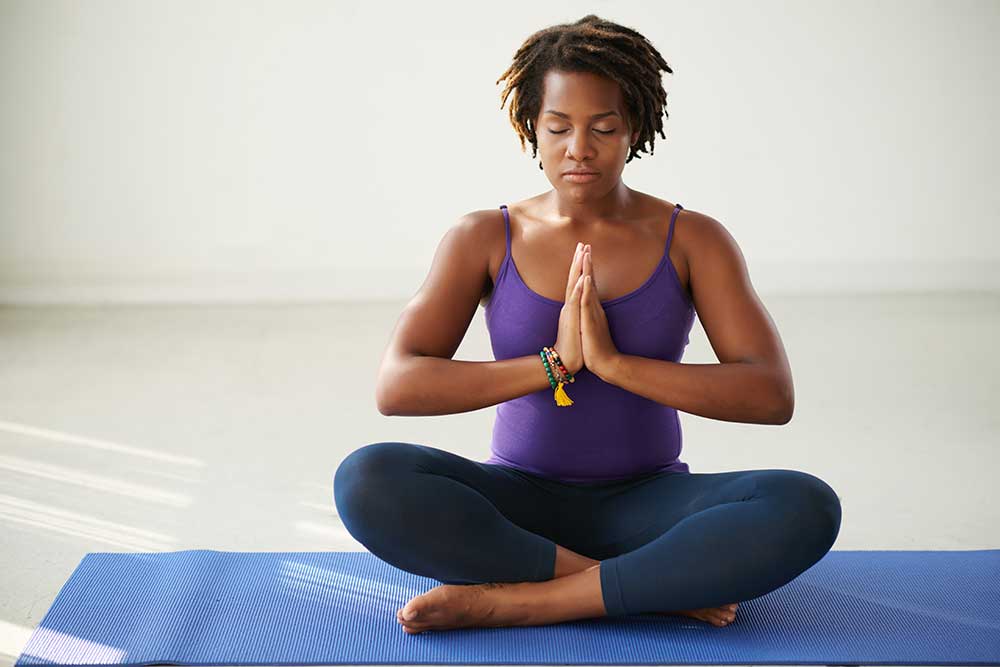
Yoga is a great way to get back in shape and release stress postpartum. Meditation and pranayama (breathwork) are also great stress relievers to practice at the beginning and end of yoga sessions.
While it may be tempting to jump into a fast-paced, vinyasa yoga class or complete a HIIT workout, it is not a great idea weeks after giving birth. It is important to take it slow and avoid exercises that put pressure on the abdomen. Focus your postpartum exercises on gentle stretches in tight areas like the hips and lower back.
The best thing to do is speak with your doctor about your limitations and listen to your body. Postpartum is a time where your body is working hard to recuperate, and it should not be pushed too far. This could cause serious injuries or unnecessary fatigue.
Postpartum Yoga
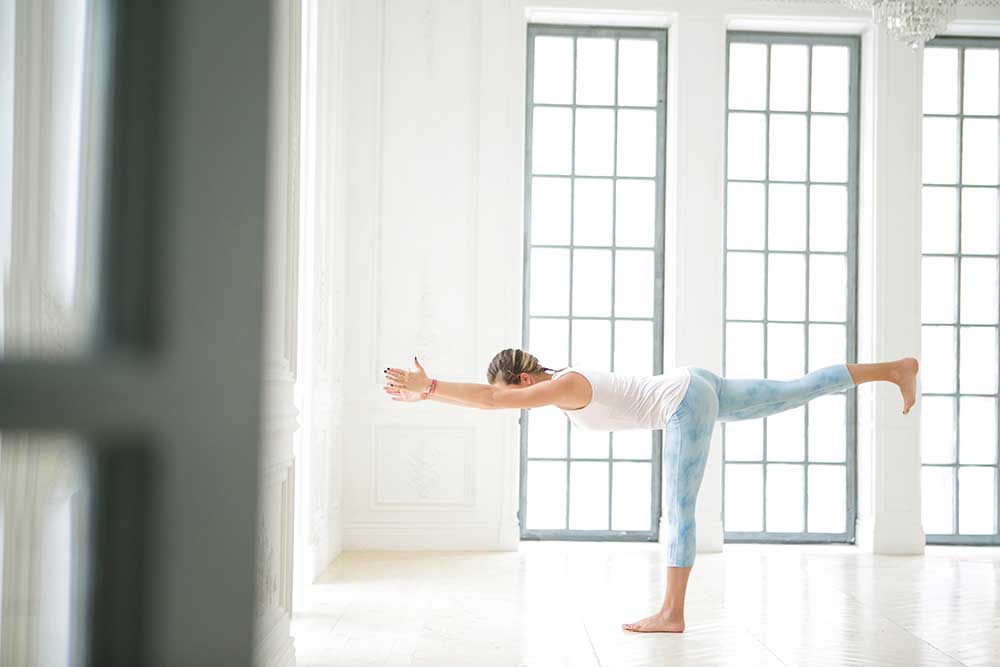
Yoga is a great way to get back into exercise after having a baby. The poses are low impact and designed to increase strength and flexibility. Yoga works out any tightness that has occurred in your body during pregnancy.
Carrying a baby for 9 months is no easy feat! The body’s changes can often lead to new moms feeling weak and inflexible after giving birth. Areas like the hips, back, and shoulders can be especially tight.
Gentle hip openers like supta baddha konasana (reclined soles bound pose) is a great pose for relaxing tension in the hips. According to Baobei Active, this pose helps the pelvic floor relax as the ground supports the entire body.
When working with the back postpartum, avoid intense backbends and deep twists. While these poses can be good for strengthening the spine, they put pressure on the abdomen area. This should not be done during postpartum exercise.
Balasana (child’s pose) is the perfect pose to release the lower back. As you sink your torso in between your thighs, you will work to gain flexibility and mobility throughout the back.
The shoulders are another area that may need strengthening postpartum. Aaptiv Magazine mentions that cow face pose is a great way to combat the shoulder hunch that happens when nursing or holding your new baby. This pose does it all. It opens the hips and the shoulders, all while increasing strength and flexibility.
Almost every yoga pose helps to make the body stronger and more flexible. The most important aspect of postpartum yoga is that you aren’t straining your body to gain back strength and flexibility. If your muscles are quivering or you are feeling a sharp pain, take a step back. Find your edge and don’t go past it. Meet yourself where you are at today, knowing that you and your body are always enough.
Also, yoga is very relaxing. It can help new moms release some of their stresses and anxieties about taking care of their new baby. According to Harvard Health, yoga is a great tool for managing anxiety and depression. By connecting breath and movement, new moms can relax and feel grounded. Beyond the physical movements of yoga, meditation and pranayama are two great practices for new moms to try postpartum.
Mommy & Me Yoga
Many yoga studios now offer classes for moms and their new babies. During these classes, the focus is on gentle poses that can be done with the baby. Yoga with your baby is a great way to get in a workout and have bonding time with your child.
Using Props
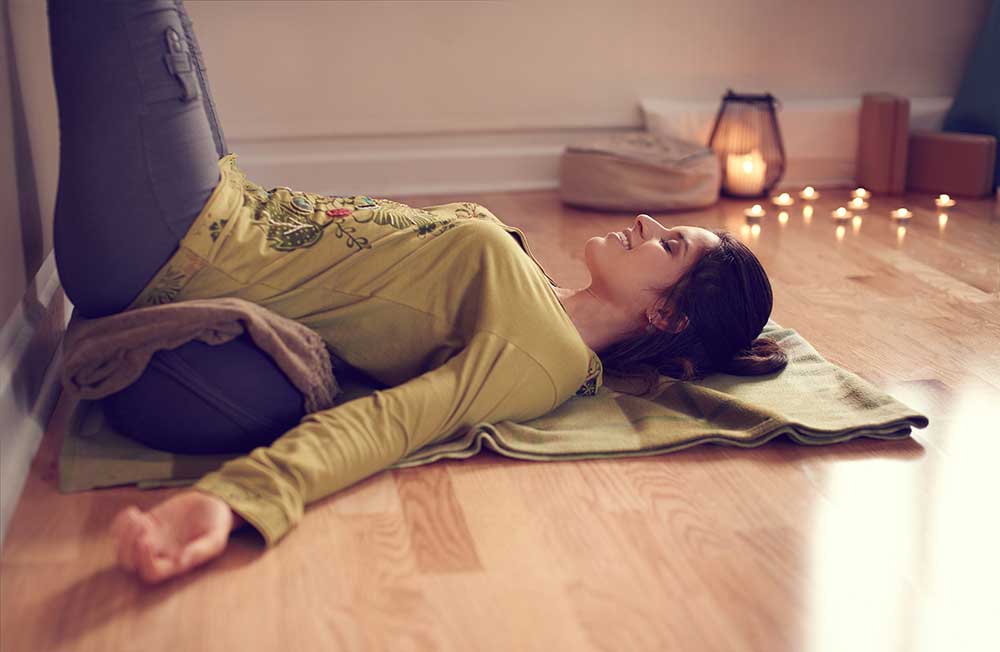
Yoga props make the poses more accessible. They can be very helpful as new moms start their postpartum yoga routine. Blankets, blocks, straps, and bolsters are great items to help support your practice.
Meditation for Moms!
Before or after your yoga sessions, take 10-20 minutes to meditate. Meditation is a wonderful wellness tool that can calm the mind and relax the body. Apps like Headspace and Calm are perfect for beginners. Meditation in the morning is a good way to start your day with a fresh mind. In the afternoon, it can clear your head of any unrest that gathered in your thoughts throughout the day. Also, meditation can help with postpartum depression.
Pranayama – Breathing
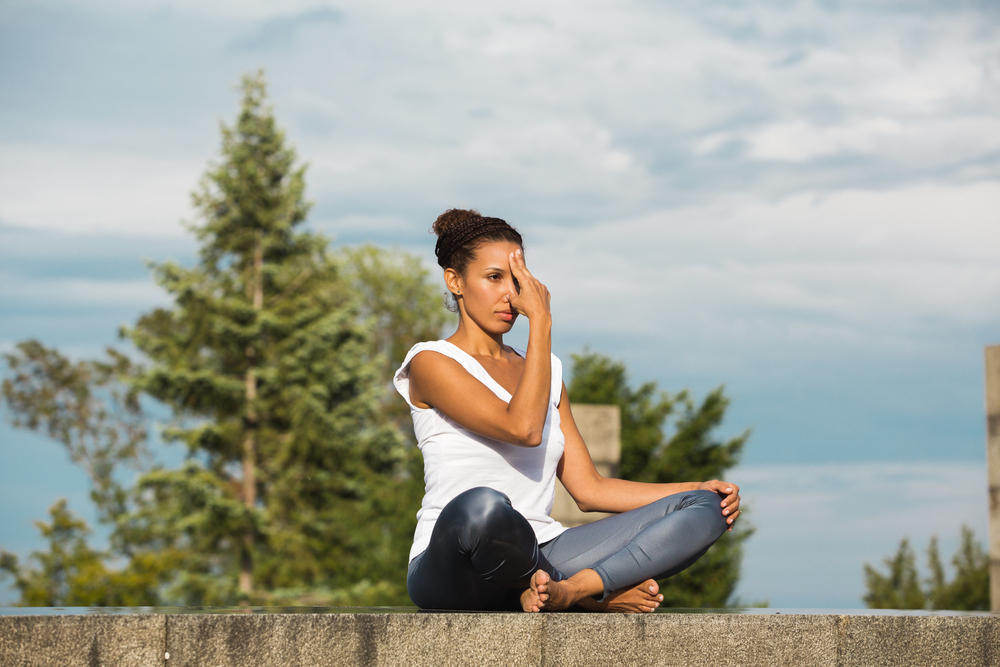
Pranayama is a breathwork practice in yoga. According to Yoga Journal, is it a practice of controlling the breath that is the prana source or the vital life force. It is a great way to promote relaxation throughout the body. Pranayama stimulates the Vagus nerve, which activates the parasympathetic nervous system. Alternate nostril breathing, single nostril breathing, and lion’s breath are all great pranayama practices.
What You Will Need to Follow This Tutorial
- Yoga mat
- Blanket
- Blocks
- Strap
- Bolster
- Your baby (if you are attending a mommy and me yoga class!)
Step-by-Step Instructions
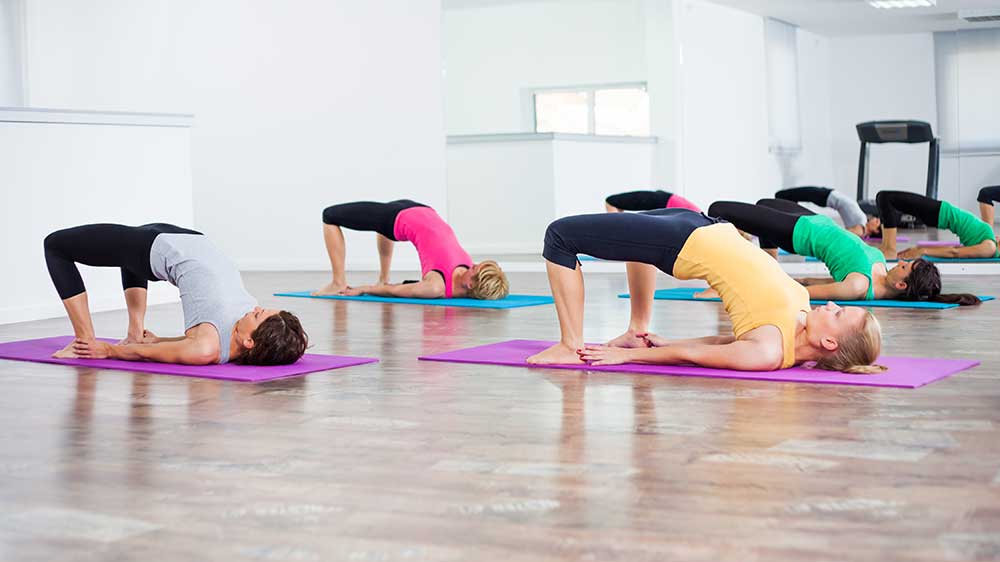
This step-by-step guide provides new moms with ten yoga poses to do at home. These poses help moms to gain strength and flexibility postpartum without putting undue pressure on the body.
-
Balasana (Child’s Pose) – In this pose, toe touch, knees are spread wide apart, and the torso is lowered between the thighs. Rest the head on the mat, block, or blanket. Arms are extended toward the front of the mat. According to Aaptiv, this pose alleviates head, neck, and chest pain. Child’s pose also opens up the pelvic floors, hips, and lower back.
- Sukhasana (Easy Pose) – Remember sitting criss-cross applesauce back in elementary school? This pose is the same thing! While it may have felt easy as a child, it is a great way to gain flexibility in your hips as an adult. Cross your legs and sit with a tall spine, crown of the head reaching toward the ceiling. Relax your shoulders. Switch the order of your legs halfway through so that both hips get opened.
- Viparita Karani (Legs Up The Wall) – This simple pose can be done any time of day but is especially relaxing right before bed. Scoot your bottom up to the wall as close as possible. Then, extend both of your legs and rest them against the wall. Yoga Journal states that this pose allows blood to flow away from the feet to the upper body, which can be very rebalancing after spending time on your feet. For months you were carrying your unborn baby, and now you are carrying your newborn! It is quite common for pregnant women and new moms to have swollen feet. Legs up the wall is very helpful in combating that issue.
- Upavistha Parivrtta Ardha Utkatasana (Seated Figure 4) – Sit on your yoga mat and place a blanket underneath you for extra support and cushion. Bend your left knee and plant your left foot on the mat. Bend your right knee and cross your foot over your left leg so that your left ankle is resting on your right thigh. Keep your foot flexed to protect the knee. Repeat on the other side. This is a great stretch for strengthening, and opening the hips, which often become stiff during pregnancy and postpartum.
- Tadasana (Mountain Pose) – Stand at the top of the mat with your feet hip’s width distance apart. The crown of the head is drawing toward the ceiling, and arms are resting at your side. Relax your shoulders. On an inhale, raise your arms and hands to the ceiling, palms meeting overhead. On an exhale, let them soften back by your sides. This pose and movement will help make the shoulders more flexible. Mountain pose also promotes a sense of stability and grounding.
- Setu Bandha Sarvāṅgāsana (Bridge Pose) – Postpartum, you will want to avoid deep backbends as they can put pressure on your healing abdomen. A bridge is a gentle backbend that is the perfect medicine for pregnancy-related back pain. Lie on your mat with your knees bent and the soles of the feet on the ground. Press your arms into the ground and slowly lift your hips and chest, chin slightly tucks. Don’t go too far! You should not feel pinching in your lower back. If this pose feels too intense, turn it into a supported bridge by tucking a block underneath your hips.
- Āñjaneyāsana (Low Lunge) – Start from a tabletop position where your hands and knees are grounded, and your spine is neutral. Step your right foot in between your hands and slowly raise the torso, extending arms to the sky. You can leave the left knee grounded for a more supportive pose, or you can lift it off the ground to further strengthen. This is truly a full-body pose! It works to strengthen the legs, hips, and arms.
- Gomukhasana (Cow Face Pose) – This pose will make you look like a pretzel! Sit on your bottom and cross your legs, one on top of the other. Your knees will be stacked and facing forward and the soles of the feet are facing the back of the mat. Sit on a blanket if your hips are coming off the mat. Stay here or cross your arms in front of you so that biceps are parallel to the ground, forearms are crossed, palms are touching, and fingertips are pointing to the sky. This full-body stretch will help new moms gain flexibility in their hips and shoulders. Don’t forget to switch your crosses and do the other side.
- Reclined Supta Baddha Konasana (Bound Angle Pose) – This pose has a fancy name, but it is quite simple. Think butterfly pose but on your back. Laying on your back, bend your knees and bring the soles of the feet to touch. You can tuck blankets or blocks under your knees if they feel uncomfortable. Slow down your breathing and relax. You will gradually feel your hips start to open and feel more flexible. This is a great pose to do first thing in the morning to get your hips nice and open for the rest of your day.
- Savasana (Corpse Pose) – The most relaxing yoga pose of all! Find a comfortable position to lay down on your mat. Arms and legs are relaxed. Feel free to lie on a blanket or place a blanket over the top of you. This is the perfect pose to do at the end of a postpartum yoga practice. It gives your body time to relax and absorb the benefits of the yoga session fully.
Poses to Avoid
After giving birth, your abdominal muscles need some time to heal. This is especially true if you had a C-section. Avoid any poses that put pressure on the abdomen area like cat, cow, triangle, wheel, and deep twists/backbends.
Postpartum Yoga = Strength, Flexibility, and Relaxation
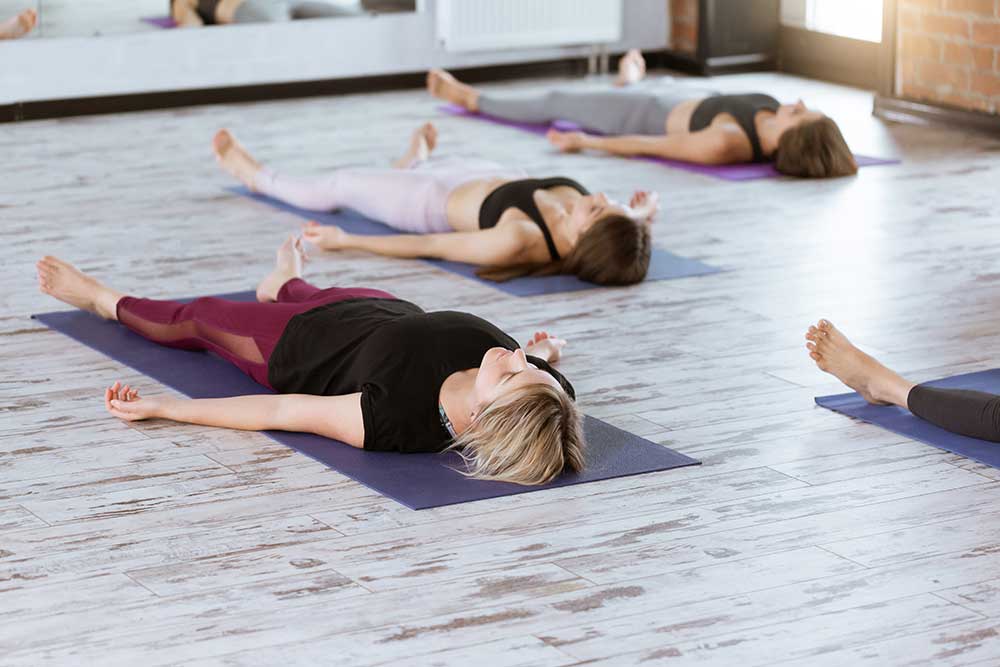
Many new moms are excited to start working on becoming stronger and more flexible postpartum. Most doctors recommend waiting at least six weeks after giving birth before starting a gentle exercise routine. This time could be even longer if the mom had a C-section.
Once the time is right, yoga is a great way to introduce gentle movement, stretching, and breathwork back into the body. Gentle yoga poses can help gradually increase strength and flexibility without putting too much pressure on the healing abdomen.
Meditation and pranayama are two tools that can be added to a postpartum yoga routine. Both will help new moms to draw awareness to their breath and take a moment to relax in the present moment.
Whether you want to practice postpartum yoga at home or join a baby and me yoga class, the key is listening to your body and talking to your doctor. You and your doctor will know what is best for your body and your unique situation. Lower your workout expectations and enjoy this time to gently care for and nourish your body after 9 long months of pregnancy!
What's Your Reaction?
Former nutrition specialist Alexandra Mackenzie knows what it means to support the body and mind through food. She’s passionate about sharing her wealth of knowledge with anyone willing to listen.






